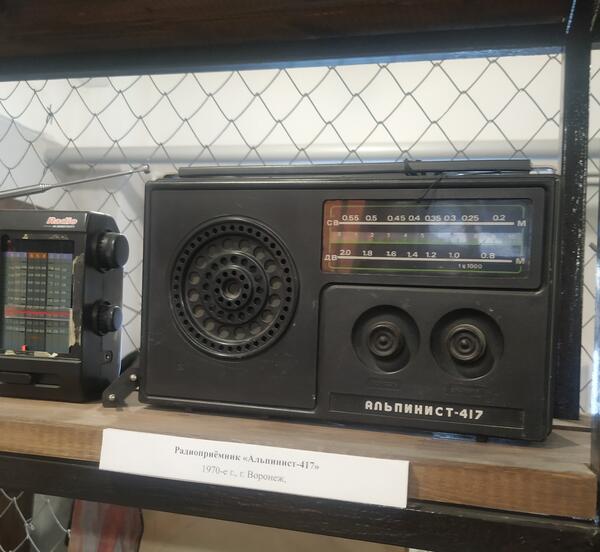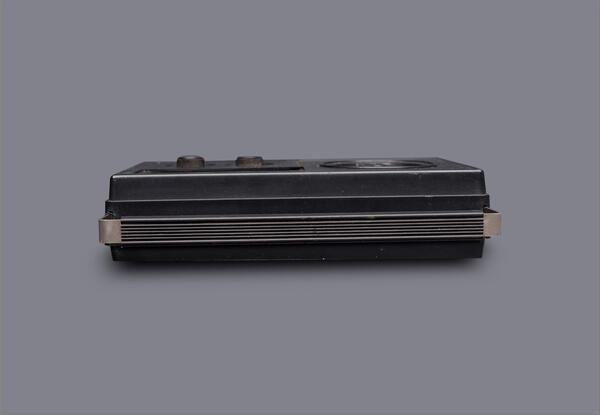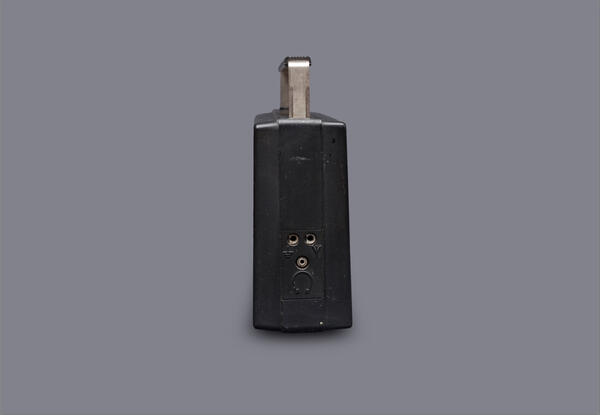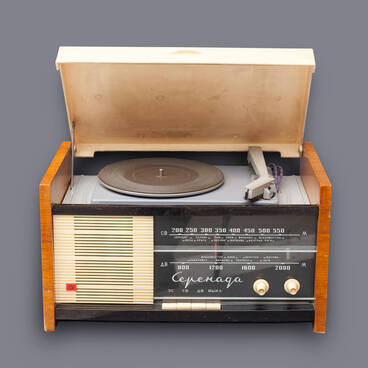Soviet factories manufactured both first- and second-class radios (that were fairly expensive for average consumers), and cheaper equipment, including the camping segment — lightweight yet reliable fourth-class receivers, which were assembled with seven transistors and two diodes. One of the most mass-produced was the Alpinist series.
In 1959, three factories — those based in Voronezh and Grozny, as well as the Leningrad TEMP Factory [of Precision Electromechanical Equipment] — launched the Atmosfera line. A year later came the second generation assembled only in Voronezh and Grozny, and in 1964, the same factories released an upgraded version — the Atmosfera-2M. It gave the start to a new series.
The first model of the Alpinist was assembled both in Voronezh and Grozny, the second — only in Voronezh. The only difference was that the carrying handle of the Alpinist-2 was made integral with the case.
More models followed, with various modifications. In 1971, the Alpinist-405 was launched, and in 1975, the Alpinist-407. Soon, radios with the Alpinist brand were produced only at the Voronezh Radio Factory, while the Grozny factory chose to focus on receivers of the Giala and Khazar brands.
In 1980, the Voronezh Radio Factory began producing the Alpinist-417 and Alpinist-418 portable radios. Many criticized them as being too bulky, but the large dimensions allowed to accommodate a more powerful loudspeaker, which brought in better sound quality.
The portable transistor radios the Alpinist-417 and the Alpinist-418 were similar in electric circuitry and design while differing in the exterior of the loudspeaker grille; besides, the 417th model had a built-in power supply enabling it to be connected directly to the AC mains. In terms of the retail price, the Alpinist-417 was six rubles more expensive.
The 417th model of the radio worked in the LW and MW frequency bands. The weight was 1.7 kg, and the carrying handle was slid inside the case. The Alpinist-417 had a system for the connection of headphones. The case was made in plastic of different colors.
In 1959, three factories — those based in Voronezh and Grozny, as well as the Leningrad TEMP Factory [of Precision Electromechanical Equipment] — launched the Atmosfera line. A year later came the second generation assembled only in Voronezh and Grozny, and in 1964, the same factories released an upgraded version — the Atmosfera-2M. It gave the start to a new series.
The first model of the Alpinist was assembled both in Voronezh and Grozny, the second — only in Voronezh. The only difference was that the carrying handle of the Alpinist-2 was made integral with the case.
More models followed, with various modifications. In 1971, the Alpinist-405 was launched, and in 1975, the Alpinist-407. Soon, radios with the Alpinist brand were produced only at the Voronezh Radio Factory, while the Grozny factory chose to focus on receivers of the Giala and Khazar brands.
In 1980, the Voronezh Radio Factory began producing the Alpinist-417 and Alpinist-418 portable radios. Many criticized them as being too bulky, but the large dimensions allowed to accommodate a more powerful loudspeaker, which brought in better sound quality.
The portable transistor radios the Alpinist-417 and the Alpinist-418 were similar in electric circuitry and design while differing in the exterior of the loudspeaker grille; besides, the 417th model had a built-in power supply enabling it to be connected directly to the AC mains. In terms of the retail price, the Alpinist-417 was six rubles more expensive.
The 417th model of the radio worked in the LW and MW frequency bands. The weight was 1.7 kg, and the carrying handle was slid inside the case. The Alpinist-417 had a system for the connection of headphones. The case was made in plastic of different colors.






